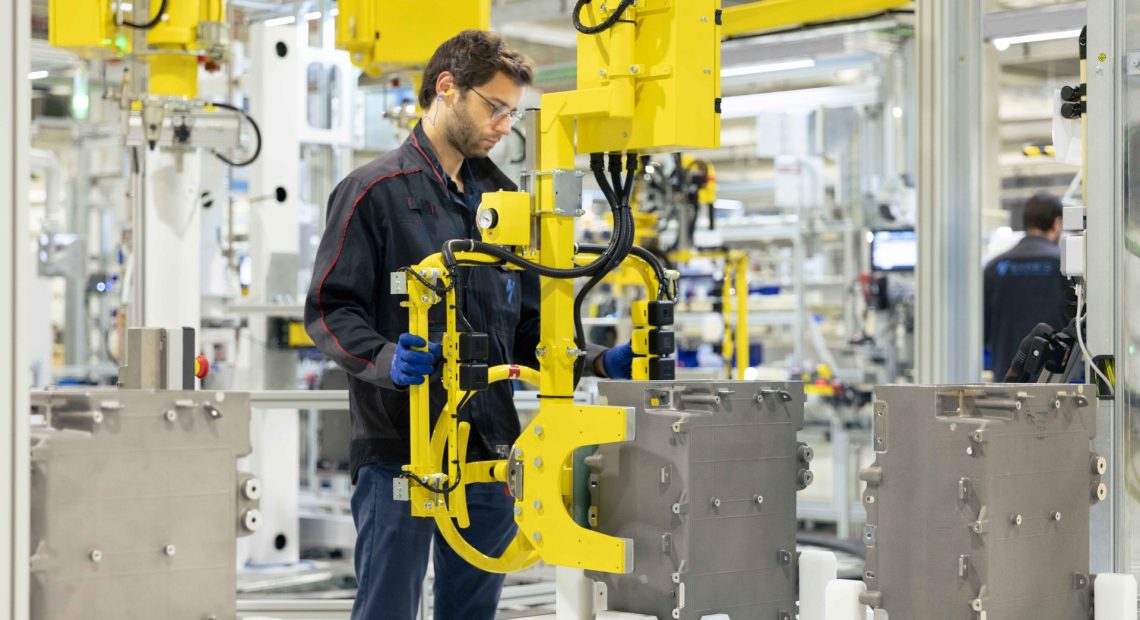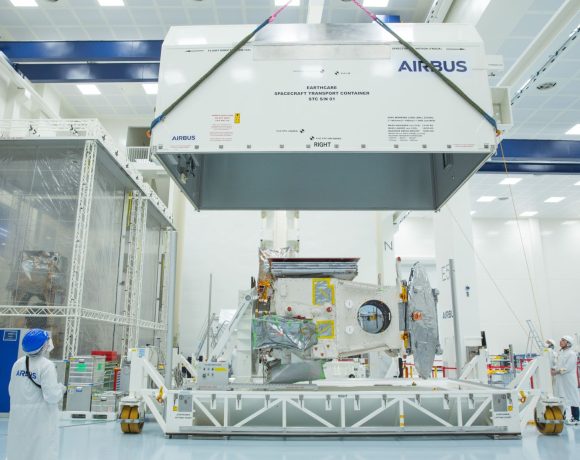Symbio consortium launches its first gigafactory in France

SymphonHy is Europe’s largest hydrogen fuel cells site
Symbio – a global leader in fuel cells – and an equally owned joint venture between Forvia, Michelin and Stellantis, has inaugurated SymphonHy, its first gigafactory.
Located in Saint-Fons, in the Auvergne-Rhône-Alpes region of France, SymphonHy is Europe’s largest integrated fuel cell production site, making the new facility a centre of technological and industrial excellence.
The site houses the group’s headquarters, a production plant, an innovation hub of unparalleled dimension, and the Symbio Hydrogen Academy.
With its state-of-the-art technology, SymphonHy has a high level of automation and robotics, supporting large-scale industrial production at a more competitive cost. These developments are vital in accelerating the roll-out of competitive, high-performance hydrogen-powered transport and contribute to Europe’s energy transition and the ambitions to move towards net zero.
Benefitting customers
SymphonHy will enable Symbio to support its customers in making zero-emission hydrogen mobility affordable without compromising performance.
Watch the video:
With more than 30 years of experience, the support of its shareholders and leaders in the automotive world, and six million kilometres of road-testing already on the clock, Symbio has developed unique expertise.
The group offers a broad portfolio of solutions that meet all power, durability and autonomy requirements for efficient zero-emission mobility, from on-road light and mid-range commercial vehicles, trucks, pickups, buses and coaches to off-road lifting and mechanical handling equipment.
With SymphonHy, Symbio can support its customers, pioneers of hydrogen-powered transport, in their deployment plans, which already show promise in real life.
Stellantis, one of the world’s leading automakers and also a Symbio co-shareholder, was the first company to market a zero-emission hydrogen solution for light commercial vehicles for the Peugeot e-Expert, Citroën e-Jumpy and Opel Vivaro-e models.
Expanded range
Stellantis is expanding its range to include large vans with a mid-power architecture, up to 500km range and a recharge time of less than 10 minutes.
Stellantis has confirmed its plans to develop a hydrogen technology for its Ram brand pickups, in line with its aim of electrifying its portfolio of vehicles with a range of 320 miles ALVW or 200 miles GCWR and fast tank refilling, without compromising on payload capacity. All these vehicles will be equipped with fuel cells produced by Symbio.
Philippe Rosier, CEO of Symbio, said: “SymphonHy is proof of Europe’s industrial and technological leadership. Together with the entire ecosystem and our private and public partners, we are ready to scale up and make hydrogen-electric mobility a sustainable, high-performance, and affordable reality.
“Delivered in less than two years, SymphonHy is a testimonial of Symbio’s ability to meet its industrial commitments, underpinning the acceleration of zero-emission hydrogen mobility deployment. The first 100% fuel cell system assembled at SymphonHy was produced in October 2023, just one month after the gigafactory became operational.”
Patrick Koller, CEO of Forvia, added: “A few weeks after inaugurating two major Forvia sites in France to accelerate the decarbonisation of mobility, I am delighted to be part of this new step for Symbio, which is now sized to meet the challenges of the global market. This plant is further proof of our commitment to zero-emission mobility.
Hydrogen potential
“Forvia believes hydrogen technology is the only complementary credible alternative to battery electrification. With Symbio, we cover 75% of the hydrogen mobility value chain, from fuel cells to storage systems. We are working to develop innovative solutions to improve the range of our customers’ fuel-cell electric vehicles. In 2022, FORVIA delivered 10,000 hydrogen tanks worldwide, a record and an important milestone in our quest to become number one.”
Florent Menegaux, CEO of Michelin, stated: “Michelin was a very early believer in hydrogen and Symbio, which we acquired before turning it into a joint venture with Forvia in 2019. The entry of Stellantis into the capital this year confirms that hydrogen meets a constant concern to support the future of mobility.
“This technology is now proving to be an essential addition to satisfy the need for longer range, particularly for commercial vehicles, which are starting to be fitted out. It is no coincidence that the Group recently announced a range of hydrogen-powered vehicles through its subsidiary Watèa by Michelin, a mobility operator specialising in the energy transition of business fleets, with an offer of a hydrogen vehicle.”
Carlos Tavares, CEO of Stellantis, said: “Symbio is proof that three French-rooted and leading companies in their respective fields can join forces and expertise to be at the forefront. Today’s inauguration marks an essential step as hydrogen is part of our mix of technologies for commercial vehicle customers.
‘Building block’
“This technology is a building block of the robust electrification ecosystem we are developing to support our bold goal to reach, by 2030, 100% electric sales in Europe and 50% in the U.S. As Stellantis’s purpose is to ‘lead the way the world moves,’ hydrogen will contribute to reaching our ambitious carbon net zero target by 2038, ahead of the competition in our fight against climate change.”
In partnership with the German group Schaeffler, Symbio has also set up a 50/50 joint venture, Innoplate, to produce bipolar plates (BPPs), a strategic component in fuel cells.
Based in Alsace, France, Innoplate will be operational in the first quarter of next year with an initial capacity of 4 million BPPs, rising to c—50 million BPPs annually and employing over 120 people by 2030. Innoplate will help accelerate the production of new-generation BPPs for the PEM (proton exchange membrane) fuel cell market, improving performance and competitiveness while reducing costs.
Fuel cell technology complements battery technology for sustainable electric mobility. It is ideal for intensive and demanding professional usages, entailing heavy loads, long distances, and quick refilling times. It is particularly well-suited to business transport.
Symbio has also been based in the United States since 2021, already benefiting from a pilot plant in California sourced from the Group’s European facilities during the first phase. Symbio is already looking for opportunities to expand and build a new fuel cell gigafactory in the U.S. to support North America’s promising hydrogen mobility dynamics.
SymphonHy is helping to define fuel cell production standards that will serve as the industrial model for its new sites, in line with Symbio’s aim to produce 200,000 units worldwide by 2030.
Featured image: SymphonHy is a centre of technological and industrial excellence. Image: Symbio
Last Updated on 1 year by Arnold Pinto












